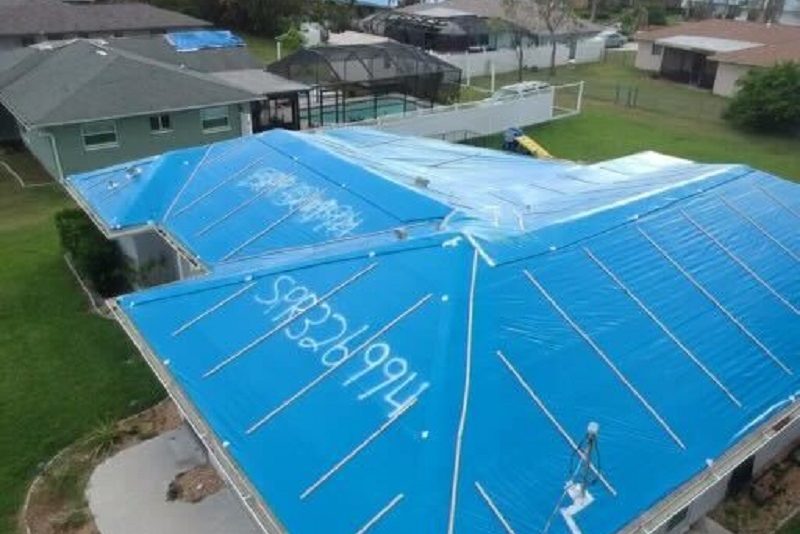
The underlayment of a roof may not be visible, but it plays a crucial role in protecting your home from the elements. While it’s tempting to focus solely on the outer layer of shingles or tiles, the underlayment is the unsung hero that provides an extra layer of defense against water, wind, and even fire. The objective of this post is to shed light on some of the common issues associated with synthetic roof underlayment, helping you make an informed decision for your next roofing project.
What is Synthetic Roof Underlayment?
Synthetic roof underlayment is a high-tech alternative to traditional asphalt felt. Made from polymers like polyethylene or polypropylene, synthetic underlayments are engineered to offer superior strength, durability, and moisture resistance. They are commonly used in both residential and commercial roofing projects and are compatible with a wide range of roofing materials, from asphalt shingles to metal roofing systems.
Advantages of Synthetic Roof Underlayment
Before diving into the issues, it’s important to acknowledge the advantages of synthetic roof underlayment. One of the most notable benefits is its durability. Unlike traditional felt, which can tear easily, synthetic underlayments are designed to withstand extreme conditions, offering a longer lifespan. They are also highly water-resistant, making them an excellent choice for regions prone to heavy rainfall.
Another advantage is ease of installation. Synthetic underlayments are generally lighter and come in larger rolls, reducing the time and labor required for installation. Additionally, many synthetic options come with UV protection, allowing for a longer exposure time before the installation of the final roofing material, which can be particularly beneficial in case of construction delays.
4 Common Issues with Synthetic Roof Underlayment
While synthetic roof underlayment offers a range of benefits, it’s not without its drawbacks. Below are four common issues that you should be aware of:
Issue 1: Cost
One of the most immediate concerns for many homeowners and contractors is the cost. Synthetic underlayments are generally more expensive than their traditional asphalt-felt counterparts. The average cost of synthetic underlayment can range from $0.20 to $0.50 per square foot, compared to asphalt felt, which typically costs between $0.15 and $0.25 per square foot.
While the initial investment is higher, it’s essential to consider the long-term benefits, such as increased durability and water resistance. However, for budget-conscious projects, the higher upfront cost can be a significant deterrent.
Issue 2: Slipperiness
Safety should always be a top priority during any roofing project, and some synthetic underlayments can be slippery, especially when wet. This poses a risk to contractors and anyone else who may need to walk on the roof during or after installation. Some manufacturers have addressed this issue by adding granulated or textured surfaces to improve traction, but it’s crucial to consult with your contractor about the specific product’s safety features.
Issue 3: Incompatibility with Certain Roofing Materials
While synthetic underlayments are compatible with a wide range of roofing materials, they are not universally suitable for all types. For example, some types of synthetic underlayment may not be recommended for use with certain metal or rubber roofing systems due to the potential for chemical reactions that can compromise the integrity of the roof. Always check the manufacturer’s guidelines and consult with roofing professionals to ensure compatibility with your chosen roofing material.
Issue 4: Potential for Trapped Moisture
Synthetic underlayments are excellent at repelling water, but this can sometimes be a double-edged sword. In some cases, moisture can become trapped between the underlayment and the roofing material, leading to issues like mold growth or rot. This is particularly concerning in humid climates or in roofing systems that lack adequate ventilation. To mitigate this risk, it’s essential to ensure proper installation techniques and consider using breathable synthetic underlayments that allow moisture to escape.
How to Mitigate These Issues
While synthetic roof underlayments come with their set of challenges, there are ways to mitigate these issues effectively:
- Cost: To address the higher upfront cost, consider the long-term benefits of synthetic underlayment, such as durability and water resistance. If budget constraints are a significant concern, look for manufacturers that offer budget-friendly yet reliable options.
- Slipperiness: Opt for products that feature textured or granulated surfaces to improve traction. Always follow safety guidelines and consult with your contractor about the best practices for a safe installation.
- Incompatibility: Always read the manufacturer’s guidelines and consult with roofing professionals to ensure that the synthetic underlayment you choose is compatible with your roofing material.
- Trapped Moisture: To prevent moisture issues, ensure proper installation and consider using breathable synthetic underlayments. Adequate ventilation in the roofing system is also crucial to allow moisture to escape.
Frequently Asked Questions
To further assist you, here are some commonly asked questions about synthetic roof underlayment:
- Is synthetic underlayment better than felt?
- While synthetic underlayment offers advantages like higher durability and water resistance, the “better” option depends on your specific needs, including budget and compatibility with your roofing material.
- Can synthetic underlayment be left exposed?
- Some synthetic underlayments come with UV protection and can be left exposed for a certain period, but it’s best to consult the manufacturer’s guidelines for specific information.
- How long does synthetic underlayment last?
- The lifespan of synthetic underlayment can vary but generally ranges from 25 to 50 years, depending on the quality of the material and installation.
Conclusion
Choosing the right underlayment is a crucial step in ensuring the longevity and performance of your roof. While synthetic underlayments offer several advantages, being aware of their potential issues allows you to make an informed decision.
